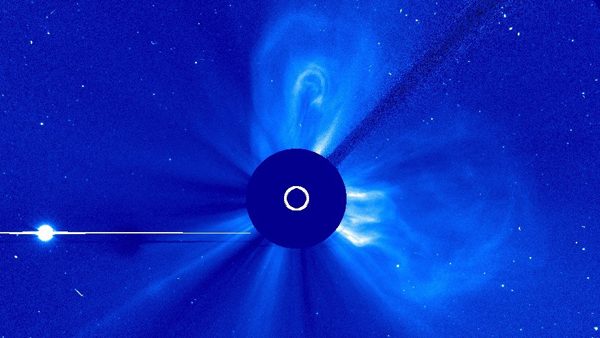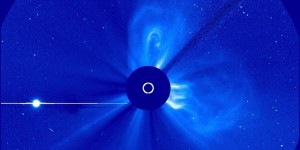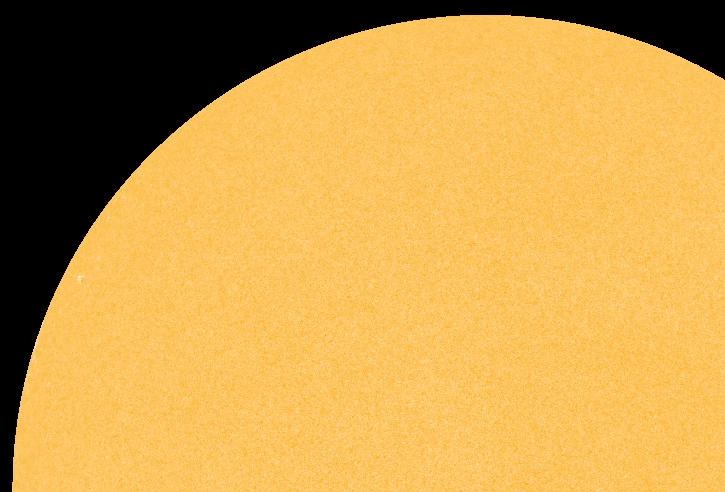

A Mercury-directed CME emitted from AR1719 as recorded by the Solar and Heliospheric Observatory. The Bright dot opposite the eruption is Venus (Credits: NASA/ESA).
The two coronal mass ejections (CME) emitted April 20 and 21 are not headed towards Earth, but they might affect operations of NASA’s Messenger satellite and STEREO-A, one of a pair of solar observing satellites, as they shoot straight for Mercury. In the meantime, the Earth-facing sunspot region AR1726 which only made an appearance on April 19, has now swollen to a massive 150,000 km in diameter – equivalent to several dozen Earth diameters. NOAA’s Space Weather Center now predicts a 40% likelihood of Earth-facing M-class solar flares as a result.
Here is a 48 hour video from Solar Dynamics Observatory of the growing AR1726:

Recording from NASA’s Solar Dynamics Observatory of the 48 hour development of AR1726 starting April 19 (Credits: NASA/SpaceWeather.com).

















































































































![A trajectory analysis that used a computational fluid dynamics approach to determine the likely position and velocity histories of the foam (Credits: NASA Ref [1] p61).](http://www.spacesafetymagazine.com/wp-content/uploads/2014/05/fluid-dynamics-trajectory-analysis-50x50.jpg)


